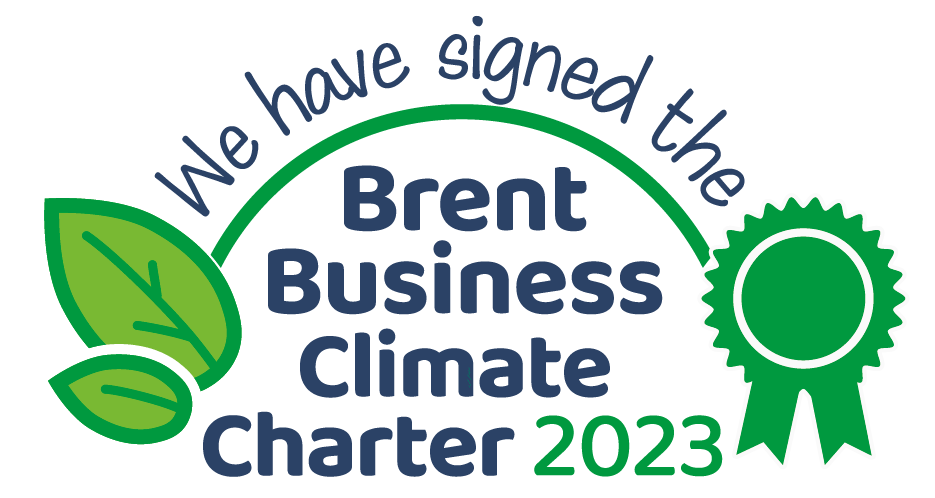Table Of Contents
When it comes to creating successful workplaces, office design is more important than you might think. It’s not just about aesthetics or having a sleek office space to impress visitors—good office design can significantly boost productivity, employee satisfaction, and overall business success. But how exactly does this work? What elements of design have the greatest impact? And how can you leverage your workspace to encourage efficiency and creativity? In this article, we’ll take an in-depth look at the link between office design and productivity, exploring the most critical factors that shape a productive workspace and sharing practical tips to optimise your office layout.
Whether you’re starting fresh with a new office or renovating an existing space, thoughtful office design can have lasting benefits. From ergonomic furniture to strategic lighting, collaborative spaces to quiet zones, each design element plays a role in helping your team perform at its best. So let’s dive deeper into how office design impacts productivity—and what you can do about it.
Ergonomic Design: Enhancing Comfort and Efficiency
The foundation of productivity in the workplace starts with comfort. Poor ergonomics can lead to physical discomfort, resulting in fatigue and decreased efficiency. Ergonomic office design means creating a workspace tailored to the physical needs of your team. This involves adjustable desks and chairs, positioning monitors at eye level, and designing workstations that promote a healthy posture.
Studies have consistently shown that ergonomically designed offices experience lower absenteeism rates and fewer workplace injuries. Employees who are physically comfortable can concentrate better, perform tasks quicker, and maintain higher levels of productivity over extended periods.
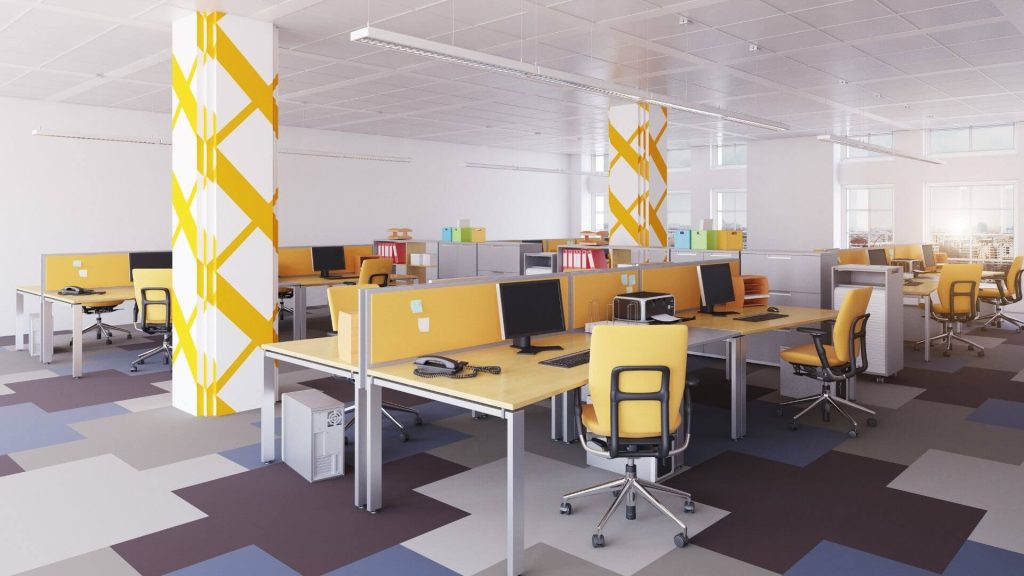
For example, adjustable sit-stand desks are gaining popularity. They enable employees to alternate between sitting and standing, reducing back pain and increasing energy levels. Similarly, chairs designed to support lumbar regions, armrests positioned correctly, and footrests all contribute to creating a healthier workspace. By prioritising ergonomics in your office design, you’re investing directly in the well-being and productivity of your team.
Lighting and Productivity: A Bright Idea
Lighting significantly impacts mood, energy, and performance. Inadequate lighting can cause eye strain, headaches, and fatigue, while overly harsh lighting can trigger stress and discomfort. The ideal office design incorporates a balanced mix of natural and artificial lighting to create a comfortable working environment.
Natural light is especially beneficial for productivity. It has been shown to improve mood, regulate circadian rhythms, and boost energy levels. Offices designed with ample windows and glass partitions maximise daylight, promoting a more vibrant and productive atmosphere.
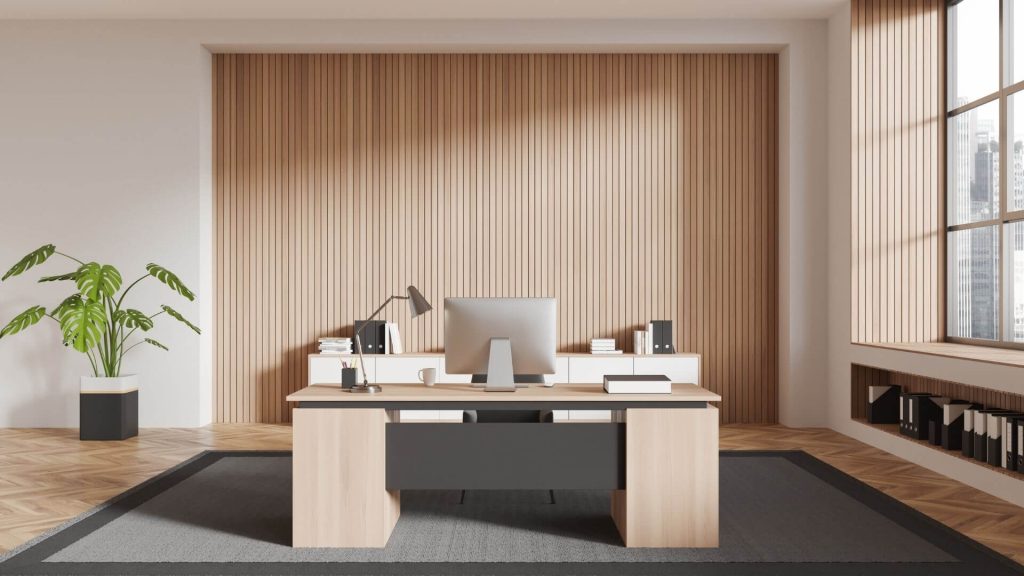
However, relying solely on natural lighting isn’t always feasible, especially in urban settings. In these cases, artificial lighting becomes crucial. LED lights with adjustable brightness and colour temperature are particularly effective. Cooler, brighter lights can help with alertness, while warmer, softer lights are suitable for communal areas to promote relaxation and collaboration. The key to effective lighting in office design is adaptability, allowing employees to adjust lighting according to their specific tasks and preferences.
The Power of Colour: Influencing Mood and Focus
The colours used in an office environment can significantly influence employees’ emotional responses and productivity. Psychology studies suggest that certain colours evoke specific responses, which is why colour choice is such an integral part of effective office design.
For example, blue hues are associated with calmness, trust, and focus, making them ideal for analytical tasks. Green, on the other hand, promotes creativity and reduces eye fatigue, making it excellent for innovation-driven work. Yellow and orange shades can stimulate enthusiasm and optimism, perfect for collaborative spaces and creative hubs. Meanwhile, neutral tones like white and grey provide a clean, minimalistic backdrop, helping employees stay organised and focused.
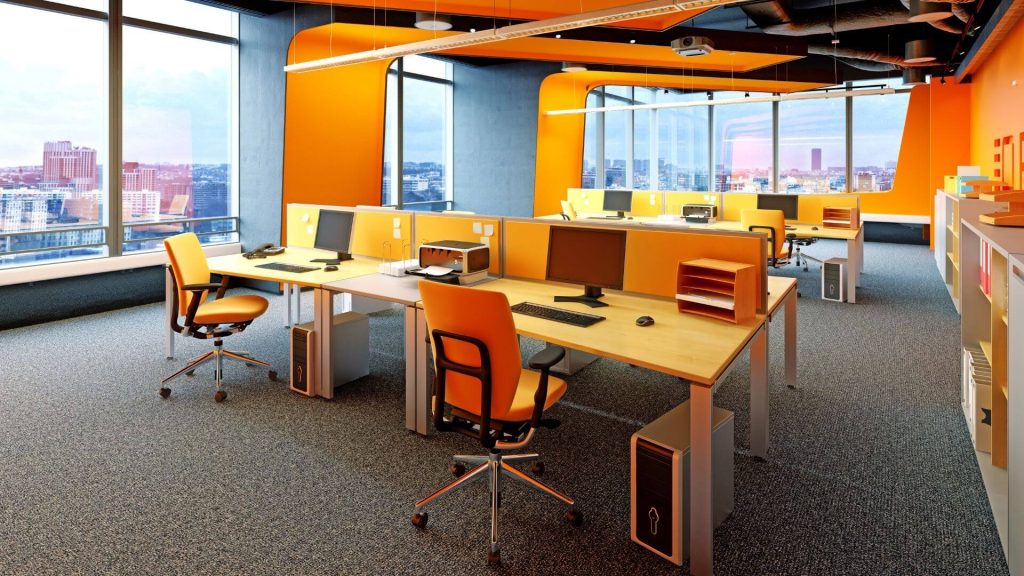
Thoughtful application of colour in office spaces—through painted walls, décor accents, or furniture—can subtly but powerfully influence mood and productivity. The right colour palette in your office design can motivate your team and create an energising workspace.
Collaborative vs. Private Spaces: Balancing Interaction and Focus
A significant factor in productivity-focused office design is how you structure your spaces. Modern offices often strive to balance collaborative spaces with areas for privacy and concentration. Open-plan offices encourage communication and teamwork, breaking down barriers and facilitating spontaneous interactions that spark innovation. However, these designs also have drawbacks, including noise, distractions, and a lack of privacy.
The ideal office design combines open spaces with dedicated quiet zones, private booths, or soundproofed meeting rooms. Quiet zones allow employees to focus intensely without distractions, essential for tasks requiring deep concentration. Collaborative areas, meanwhile, encourage brainstorming, teamwork, and creativity.
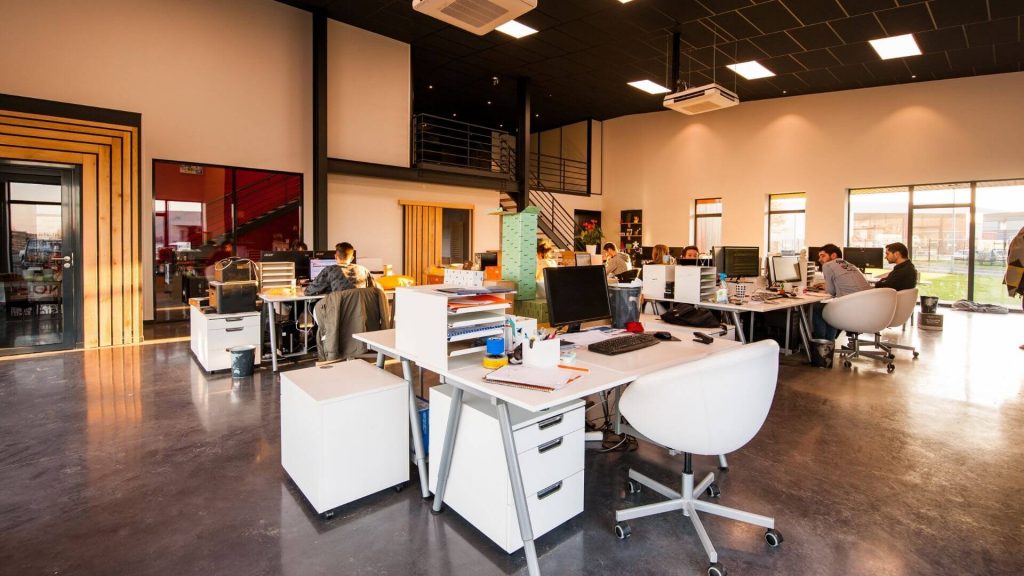
Employing flexible partitions, modular furniture, or acoustic panels can help create a hybrid workspace that meets diverse needs. The ultimate goal is to provide employees with choices in their work environment, giving them control over where and how they work productively.
Biophilic Design: Bringing Nature Indoors
Another exciting trend shaping productive workplaces is biophilic design, which incorporates natural elements into the office design. Plants, natural materials, and even features like living walls have been shown to positively impact employee well-being and productivity.
Exposure to natural elements can reduce stress levels, improve mood, and even enhance cognitive performance. Offices that integrate greenery, natural textures, and water features report increased employee engagement, reduced absenteeism, and overall higher job satisfaction. Natural materials like wood and stone add warmth to the space, creating an inviting atmosphere conducive to productivity.
Incorporating biophilic elements doesn’t have to be complicated. Even simple additions such as desk plants, natural wood desks, or framed views of outdoor green spaces can yield noticeable benefits. Embracing biophilic design principles demonstrates that your company values employee well-being, resulting in increased morale and higher productivity levels.
Office Layout and Workflow: Creating Efficient Spaces
Office layout directly influences how effectively employees can perform their daily tasks. A well-considered office layout eliminates wasted time and improves workflow efficiency. Good office design involves strategically placing teams and resources to streamline communication and task management.
For example, placing departments that frequently collaborate next to each other can greatly enhance communication and reduce delays. Similarly, positioning shared equipment or resources in central, easily accessible locations reduces unnecessary movement and saves time. Clear walkways and intuitive circulation paths help avoid congestion and distractions.
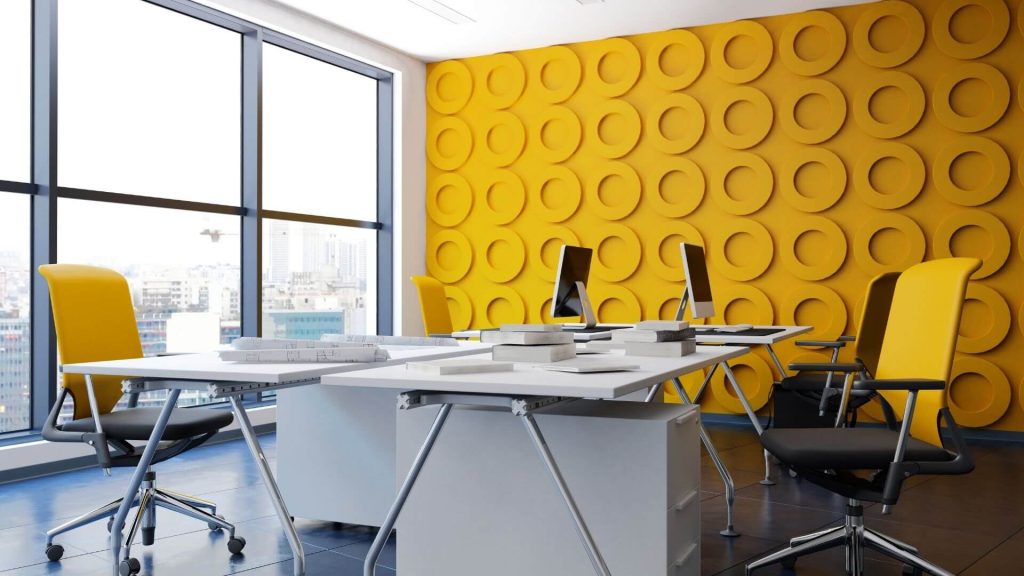
Regularly assessing and updating your office layout ensures that your space continues to meet evolving business needs. As your team grows or your operational requirements change, your office design should adapt accordingly. Flexibility is key, and adaptable spaces allow for adjustments without major disruptions or additional expenses.
Leveraging Technology: Smart Office Solutions
Modern workplaces leverage technology not only for daily tasks but also to enhance office comfort and productivity. Smart offices integrate technology seamlessly into their design, improving efficiency and the overall working experience.
Examples include smart temperature and lighting controls, automated room booking systems, and advanced conferencing facilities. Such technologies streamline operations, reduce energy consumption, and improve employee satisfaction. Smart office solutions often provide valuable data, such as insights into room utilisation, helping managers make informed decisions about future office design and resource allocation.
Integrating technology thoughtfully into your office design ensures your workspace remains adaptable, productive, and future-proofed against rapidly changing work environments.
The Bottom Line: Better Office Design Equals Better Business
It’s clear that office design significantly affects productivity, employee well-being, and overall business performance. Investing in ergonomic furniture, adaptive lighting, strategic colour schemes, versatile spaces, biophilic elements, efficient layouts, and smart technologies creates an environment where your team can thrive.
Whether you’re redesigning your current office or starting fresh, SEI can help you achieve your productivity goals with our expert office fit-out services. At SEI, we specialise in creating workplaces that boost productivity, enhance employee well-being, and reflect your unique business identity.
Interested in how we can transform your workspace? Visit our fit-out services page or get in touch via our contact page. Our friendly team would love to discuss your vision and help make it a reality.
Creating a thoughtfully designed workspace is not merely about aesthetics—it’s about laying the foundations for business success. Let SEI guide you in crafting an office that truly works for you.


